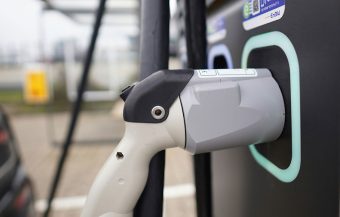Transport is an indispensable part of modern life. It connects us to the world—allowing us to carry out daily tasks, travel on holiday, and keep store shelves stocked with goods. Life without cars, trucks, ships, or planes would be unimaginable.
However, as crucial as their role is, means of transport can seriously harm another equally important aspect of our lives—our health, the environment, and even the future of our planet.
In the European Union, transport emissions have risen by over a quarter since 1990. Without serious intervention, the transport sector alone could account for nearly half of all greenhouse gas emissions by 2030, according to the latest analysis from the organization Transport & Environment (T&E).
As outlined in the EU’s strategy, the path to achieving net-zero emissions by 2050 requires urgent action. Since 2007, when transport emissions peaked, the sector has been reducing emissions at a rate three times slower than the rest of the economy.
It’s also essential to consider that the transport sector in Europe is continuously growing. According to data from the European Environment Agency (EEA), between 2000 and 2019, demand for transport increased significantly: passenger traffic by 20 percent, air traffic by as much as 86 percent, road transport by 18 percent, and freight transport by 22 percent.
The biggest polluters remain cars with internal combustion engines, which account for more than 40 percent of total emissions in the transport sector. A zero-emission target has been set for cars and trucks by 2035, meaning that by then, all new cars and vans sold in the EU should be electric. On the other hand, rail transport is considered the most environmentally friendly way to travel, apart from cycling. This fact is strengthened by the ongoing electrification of railway lines. According to Eurostat, the number of electrified railway lines has increased by about 30 percent since 1990.
IN FOCUS:
- Metanci – Winning Project for Sustainable Development
- Hungary’s Green Challenges
- Greater Inclusion of Citizens in the Energy Transition
Infrastructure for Alternative Fuels

On 12 October 2023, the European Union implemented Regulation (EU) 2023/1804 on introducing infrastructure for alternative fuels, with its application beginning on 13 April 2024. This regulation replaces the previously applicable Directive 2014/94/EU. Under the new regulation, various targets for member states will be introduced gradually until 2035. This initiative is part of the Fit for 55 package, aimed at reducing the EU’s net greenhouse gas emissions by at least 55 percent by 2030 compared to 1990 levels, with the overarching goal of achieving climate neutrality by 2050.
The Regulation sets mandatory national targets for EU member states regarding the introduction of publicly accessible infrastructure for alternative fuels, particularly electricity and hydrogen. This infrastructure applies to passenger vehicles, docked ships, and stationary aircraft, emphasizing trans-European networks. The regulation divides targets according to transport type and fuel type, with specific goals set for each category to ensure adequate charging and energy supply infrastructure and promote sustainable transport development.
Electric Vehicle Charging Infrastructure
For electric vehicles and vans, member states must ensure the installation of publicly accessible charging stations proportional to the number of registered vehicles. The total output power for each registered electric vehicle should be at least 1.3 kW, while for hybrid vehicles, it should be at least 0.80 kW. Additionally, publicly accessible charging stations along the Trans-European Transport Network (TEN-T) must be provided. By the end of 2025, each charging point with an output of at least 400 kW, including at least one point of 150 kW, should be located at least every 60 kilometers on the core TEN-T network in each travel direction. By 2035, each station along the network should have a minimum output of 600 kW and include at least two charging points of 150 kW. To meet these standards, output power at stations will gradually increase from 2025 to 2035.
Prepared by Katarina Vuinac
Read the whole story in the new issue of the Energy portal Magazine ECOLOGICAL TRANSPORT



